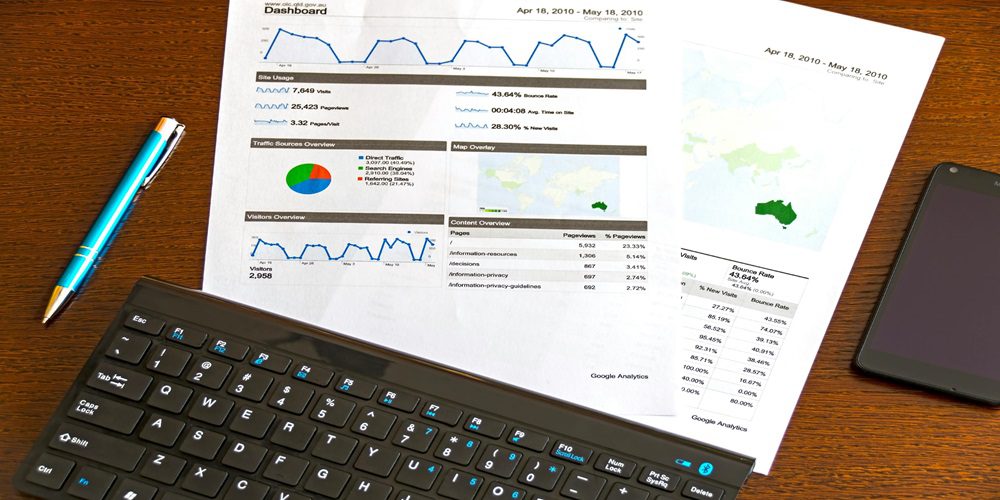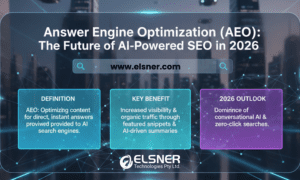In today’s fast-paced and data-driven world, the ability to make informed decisions is more crucial than ever. With the help of technology such as data analytics and artificial intelligence (AI), individuals and businesses can now harness the power of data to gain valuable insights and drive strategic decision-making. In this blog post, we will explore how you can master the art of informed decision-making using these tools, unlocking a world of possibilities for success in every aspect of your life. Let’s dive in!
Introduction to Informed Decision-Making
In today’s fast-paced and ever-changing business landscape, making informed decisions is crucial for the success and sustainability of any organization. With data becoming increasingly abundant and accessible, organizations have a wealth of information at their fingertips to guide their decision-making process. However, it is not enough to simply collect data; one must be able to analyze and interpret it effectively in order to make well-informed decisions.
This is where the art of informed decision-making comes into play. It involves utilizing various tools and techniques such as data analytics, artificial intelligence (AI), and other advanced technologies to gather insights that can inform strategic decision-making. In this section, we will delve deeper into the concept of informed decision-making and its key components.
Firstly, what exactly does informed decision-making mean? Simply put, it refers to making decisions backed by sound reasoning and evidence rather than relying on gut feelings or assumptions. Informed decisions are based on thorough research and analysis of relevant data, which helps reduce bias and uncertainty in the decision-making process.
The foundation of informed decision-making lies in accurate and meaningful data collection. Organizations need to have a structured approach towards gathering all relevant information from various sources such as internal databases, customer feedback, market trends, competitor analysis, etc. This allows them to gain a holistic understanding of the problem or opportunity at hand before making any definitive choices.
What is Data and How Does it Help in Decision-Making?
Data plays a crucial role in decision-making, as it provides valuable information and insights that can guide organizations and individuals towards making informed choices. In today’s data-driven world, it is essential to understand what data is and how it can be leveraged to make effective decisions.
Simply put, data refers to any type of information that is collected, organized, and analyzed for a specific purpose. It can be in the form of numbers, words, images, or videos. With the advancement of technology, we now have vast amounts of data available at our fingertips.
One major benefit of using data in decision-making is its ability to provide a comprehensive view of the situation at hand. By collecting and analyzing relevant data, decision-makers can gain a deeper understanding of their customers, market trends, and internal operations. This holistic view helps identify potential opportunities or challenges and enables organizations to make well-informed decisions.
Moreover, data also helps us identify patterns and trends that may not be readily apparent on the surface. Through techniques like data mining and machine learning algorithms, we can draw meaningful insights from large datasets that would otherwise go unnoticed. For instance, healthcare providers can use patient data to predict disease outbreaks accurately or financial institutions can analyze consumer spending patterns to offer personalized services.
Data also plays an essential role in reducing risks associated with decision-making. By utilizing historical data and statistical techniques like regression analysis or correlation tests, organizations can evaluate various scenarios before taking action. This predictive approach enables them to identify potential risks involved in a particular course of action and take steps to mitigate them proactively.
The Role of Analytics in Informed Decision-Making
The role of analytics in informed decision-making cannot be understated. It enables organizations to identify patterns, trends, and correlations within their data that may not be visible on the surface. By uncovering these insights, businesses can make more accurate predictions about future trends and outcomes.
One of the key benefits of using analytics in decision-making is its ability to help mitigate risks. By analyzing historical data and identifying potential risks or issues, organizations can proactively take measures to address them. For example, a retail company can use past sales data and market trends to predict demand for products during different seasons or events, allowing them to stock up accordingly.
Furthermore, analytics provides a level of objectivity in decision-making compared to traditional gut feelings or intuition. Data-driven decisions are based on factual evidence rather than opinions or biases, reducing the risk of making flawed judgments.
Informed decision-making through analytics also allows businesses to identify areas for improvement and optimize processes. For instance, by tracking key performance indicators (KPIs) such as customer satisfaction rates or production efficiency using analytics tools, organizations can pinpoint bottlenecks in their operations.
Moreover, with the advancements in artificial intelligence (AI), predictive analytics has become even more powerful in facilitating informed decision-making. AI algorithms analyze vast amounts of data at lightning-fast speeds, providing real-time insights that aid in making immediate decisions.
AI and its Impact on Decision-Making
In today’s rapidly evolving technological landscape, artificial intelligence (AI) has become an integral part of decision-making processes for many organizations. With its ability to analyze vast amounts of data and identify patterns, AI has the potential to greatly improve the accuracy and efficiency of decision-making. However, along with its benefits, AI also brings forth various challenges and considerations that must be carefully navigated in order to master the art of informed decision-making.
One significant impact of AI on decision-making is the speed and accuracy it provides. Traditional manual methods of data analysis can be time-consuming and prone to human error. With AI-powered algorithms, data can be processed at lightning-fast speeds while minimizing errors. This not only saves valuable time but also ensures more reliable outcomes.
Moreover, AI can sift through massive volumes of structured or unstructured data to identify relevant insights that humans may have missed. Advanced analytics techniques such as machine learning allow AI to continuously learn from new information and adapt its decision-making processes accordingly. As a result, businesses can make more informed decisions based on real-time data rather than relying on historical trends or intuition.
However, leveraging AI in decision-making also raises ethical implications that must be carefully addressed. As algorithms are trained based on past data inputs, they may perpetuate biases present in historical datasets without being aware of them. This could potentially lead to discriminatory decisions if not properly monitored and managed by humans. areas where human intervention is still crucial.
To overcome these challenges and utilize AI effectively for informed decision-making, several steps need to be taken:
1) Ensuring transparency: Organizations should provide transparency into how AI-based decisions are being made to build trust and alleviate concerns about bias or opaque decision-making.
2) Human oversight: While AI can process vast amounts of data, human intervention and oversight are still vital in complex decision-making processes. Human involvement is required at several stages, such as defining the problem accurately, selecting appropriate data sources, and evaluating the outcomes.
3) Continuous monitoring and improvements: As algorithms learn from new data inputs, continuous monitoring is necessary to detect any potential biases or errors. Regular refinements must be made to ensure fairness and accuracy in decision-making.
Real-Life Examples of Informed Decision-Making with Data, Analytics, and AI
In today’s digital age, data, analytics, and artificial intelligence (AI) play a crucial role in shaping the decision-making process of individuals and businesses. From personal choices to large-scale strategic decisions, the insights derived from data analysis help inform our actions and guide us towards more informed decision-making. In this section, we will explore some real-life examples of how data, analytics, and AI have been used to make informed decisions.
1. Predictive Analytics in Healthcare: One notable example of data-driven decision-making can be seen in healthcare systems where predictive analytics is being utilized to identify high-risk patients and provide proactive interventions. By analyzing vast amounts of patient data using advanced algorithms, healthcare providers can anticipate potential health issues and take preventive measures before they become critical. This has not only improved the quality of care for patients but also reduced costs for both patients and healthcare facilities.
2. Targeted Marketing Strategies: Businesses are leveraging big data analytics and AI to optimize their marketing strategies by gaining deeper insights into consumer behavior patterns. For instance, companies like Netflix use personalized recommendations based on viewers’ watching habits to increase customer retention rates significantly. Similarly, e-commerce platforms utilize customer purchase history to suggest relevant products or services that can drive sales.
3. Fraud Detection in Financial Services: Financial institutions are adopting sophisticated fraud detection techniques powered by AI algorithms to prevent financial crimes like money laundering or credit card frauds. By analyzing transaction details for red flags such as unusual spending patterns or suspicious activities, these systems can quickly detect fraudulent activities before they cause significant damages.
4. Improved Supply Chain Management: With the help of big data analytics tools like supply chain optimization software, companies can make more accurate forecasts regarding demand trends and optimize their inventory levels accordingly. This ensures that they do not face stock shortages or overstocking issues while also reducing wastage and cost inefficiencies.
5 . Smarter Urban Planning: Governments worldwide are utilizing the power of data analytics to improve urban planning and development. For instance, the city of Barcelona uses sensors and data analysis to monitor traffic patterns, optimize public transportation routes, and identify potential hazards in the city. This has led to increased efficiency, reduced congestion, and improved safety for citizens.
These are just a few examples of how data, analytics and AI are being used in various industries to drive informed decision-making. With further advancements in technology and increased availability of data, we can only expect this trend to continue as we strive towards making better decisions that impact our lives positively.
Challenges and Limitations to Consider
As with any other technique or tool, data, analytics, and AI also come with their own set of challenges and limitations. It is important for companies and individuals to be aware of these potential obstacles so they can make informed decisions when leveraging these technologies.
One major challenge is the quality of data. In order to generate accurate insights, it is crucial to have access to high-quality, reliable data. However, this is often easier said than done. Data can be messy, incomplete, or biased in nature which can lead to incorrect conclusions being drawn. Moreover, with the rise of big data, businesses are now dealing with an overwhelming amount of information which can be difficult to manage effectively.
Another limitation is the lack of transparency in AI algorithms. While these algorithms are powerful tools for making predictions and recommendations based on data analysis, the process behind their decision-making can often be complex and difficult to understand. This raises concerns about accountability and bias in decision-making processes that are heavily reliant on AI.
Furthermore, there may also be ethical considerations when using analytics and AI for decision-making. For example, using personal data without consent or basing decisions solely on algorithmic predictions rather than human judgment may raise ethical concerns.
The implementation process itself can also pose challenges for organizations looking to adopt data-driven decision-making methods. It requires significant investments in terms of infrastructure, resources, as well as hiring skilled professionals who have a deep understanding of both technology and business operations.
Moreover,
there may be resistance from employees who are unfamiliar with using these technologies or those who fear losing control over decision-making processes previously carried out manually.
In addition to these challenges
and limitations related directly to technology and resources,
there are also external factors that could hinder effective use of data, analytics,
and AI-based decision making such as regulatory restrictions on certain types of analysis or confidentiality issues surrounding sensitive information.
Lastly,
it is worth noting that while analytics and AI offer powerful insights into past and present trends, they are not completely infallible when it comes to predicting the future. Making decisions solely based on data analysis without considering other factors or human intuition can lead to suboptimal outcomes.
Tips for Improving Decision-Making Processes with DAAI
Decision-making is a crucial aspect of any business or organization, and the use of Data, Analytics, and Artificial Intelligence (DAAI) has revolutionized this process. DAAI provides us with valuable insights and predictions that can greatly impact our decision-making processes. However, it is essential to have a structured approach when using DAAI for decision-making to ensure maximum effectiveness.
Here are some tips for incorporating DAAI into your decision-making processes:
1. Define your goals and objectives: Before diving into data analysis and utilizing AI algorithms, it is crucial to clearly define your goals and objectives. This will help you determine which data sources are relevant and ensure that the results align with your end goal.
2. Gather quality data: The quality of your data significantly impacts the accuracy of AI predictions. Therefore, it is essential to gather reliable and relevant data from trustworthy sources. You can also consider collecting unstructured data such as customer feedback or social media comments to gain valuable insights.
3. Utilize a combination of analytics techniques: Different types of analytics techniques offer varying levels of insights and can complement each other in decision-making processes. For example, descriptive analytics can provide a historical overview while predictive analytics can forecast future trends.
4. Don’t rely solely on AI: While AI can provide powerful predictions based on complex algorithms, it should not be the only factor considered in decision-making processes. It is essential to combine human expertise with AI-generated insights for more well-rounded decisions.
5. Regularly retrain your models: As environments change, so do patterns in data sets; therefore, regular retraining of AI models is necessary to maintain their accuracy over time.
6. Consider potential biases: It’s important to acknowledge that even machines are prone to biases if they are trained on biased data sets or programmed by biased individuals. It is crucial to continuously monitor for any potential biases in the decision-making process involving DAAI and adjust accordingly.
7. Be open-minded and flexible: The insights generated by DAAI may sometimes challenge your initial assumptions or beliefs. It is important to approach decision-making with an open mind and be willing to adapt and adjust based on the data-driven insights.
Conclusion
In today’s data-driven world, being able to make informed decisions is crucial for success. With the help of data, analytics, and AI technologies, individuals and organizations can gain valuable insights that can guide them towards making better choices. By mastering the art of informed decision-making, we can improve our personal lives and drive innovation in businesses and industries. It may seem daunting at first, but with dedication and continuous learning, anyone can become proficient in utilizing these tools to their advantage. So let’s embrace this technology-driven era and use it to create a smarter tomorrow.



































